**UPDATE LATE 2024**
After Alice Munro died, we learned about the real ‘open secrets’ (not so open to those of us not in the loop) which dominated the author’s life. We must now find a way to live with the reality that Munro’s work reads very differently after knowing certain decisions she made when faced with a moral dilemma.
For more information:
My stepfather sexually abused me when I was a child. My mother, Alice Munro, chose to stay with him from the Toronto Star
Before Alice Munro’s husband sexually abused his stepdaughter, he targeted another 9-year-old girl. ‘It was a textbook case of grooming’ from the Toronto Star
So, now what?
Various authors on CBC talk about what to do with the work of Alice Munro
And here is a brilliant, nuanced article by author Brandon Taylor at his Substack: what i’m doing about alice munro: why i hate art monster discourse
“Walker Brothers Cowboy” is the first story in Alice Munro’s first short story collection, Dance of the Happy Shades, published in 1968. In the late sixties, Alice Munro was barely known outside Canada. It wasn’t until she started to get published in The New Yorker that her reputation as a master short story writer began to gain wider traction.
Here in Australia, Munro’s Dance of the Happy Shades collection is sometimes studied in Year 12 English. These stories make an excellent introduction to the author’s work for young adults.
Also, for classroom use, short stories seem to work best when they’re on the shorter side. Alice Munro’s stories grew longer as she progressed in her career (and some probably count as novellas).
This opening story is apparently based on a real memory:
When I was a much younger child, my father took me for some reason I’ve forgotten to that woman’s house, and she taught me how to dance. There was something about the revelation of this whole Catholic style of life that seemed much freer and jollier and poorer, if you can imagine poorer than ours!
Alice Munro
First, a snapshot of the writing style:
Then my father and I walk gradually down a long shabby, sort of street, with Silverwoods Ice Cream signs standing on the sidewalk, outside tiny, lighted stores…The street is shaded, in some places, by maple trees whose roots have cracked and heaved the sidewalk and spread out like crocodiles into the bare yards. People are sitting out, men in shirt-sleeves and undershirts and women in aprons – not people we know but if anybody looks ready to nod and say, “Warm night”, my father will nod too and say something the same.
“Walker Brothers Cowboy” by Alice Munro
Obviously, “Walker Brother Cowboy” offers an excellent example of Munro’s early work. How does Munro consider her earliest stories?
The author has herself said that she has real trouble when reading her earliest work aloud to an audience. She keeps wanting to self-edit as she reads. Obviously, over a long career, writing style changes, but Munro is a fastidious editor of her own work who has trouble letting go. Munro’s later work contains great depth which requires many reads and also significant life experience. (Speaking for myself, I didn’t begin to appreciate Alice Munro until my late 30s, and the older I get, the more I appreciate it.) By dint of being Munro’s earlier work, her Dance of the Happy Shades collection is relatively accessible.
SETTING OF WALKER BROTHERS COWBOY
PLACE
- The narrator’s family used to live in a place called Dungannon, a real place situated west of Wingham, nearer the lake.
- The narrator now lives in the fictional town of Tuppertown, an old town on the shore of Lake Huron, Ontario. (This town is also mentioned in “Postcard”. There’s a nursing home in Tuppertown.)
- History: Tuppertown is an old grain port.
- It is summer, when wool fabric makes you sweaty, hot and ungrateful.
- There’s a ‘long shabby sort of street’ with a shop called Silverwoods Ice Crea ‘outside tiny lighted stores’.
- People are sitting outside on their stoops, interacting with other people in their neighbourhood.
- Nearer the outskirts of this small town you’ll find a factory with boarded-up windows. ‘Then the town falls away in a defeated jumble of sheds and small junkyards, the sidewalk gives up…’ (Munro personifies the town into a creature that seems to have lost its reason for living.)
- After this abandoned part of town, Munro takes us to the water, where she mentions a sunset, but it’s not the golden hour spectacle we might hope for, but a grey sky.
- She describes a ‘long dark green building, like a roofed verandah’, the beginning of a life of writing about what many would call nondescript buildings, barely worth a mention, and even if you did need to mention them, what is there to say?
- The father of this story impresses the Big History of the geography onto his daughter by pressing his hand into the ground, meaning to show the approximate shape of Lake Huron. (I have met people from Michigan who also use the backs of their hands to demonstrate where in Michigan they come from — that whole area bordering the lake looks like a left-handed mitten.) The father realises his hand impression makes for a meagre metaphor in comparison to the great forces of nature at work. The daughter seems to realise something about the ephemerality of a human life, powerless against time and nature, land and lake. ‘The tiny share of time we have appals me.’ This is the narrator at adolescence, a developmental period for better understanding one’s own mortality. Heidegger called this phase of life Being-toward-death. (See: I Kill Giants As Perfect Example of Being-toward-death.) Annie Proulx is another short story writer who very regularly starts a story by writing about the magnitude of the landscape and the minuscule impact of the humans, and human concerns, but also how at one humans are with the landscape, connected over generations of families, unable to escape.
This is a road trip story, and eventually the three family members leave the safety of the sealed road and enter a type of wilderness, where they will come face-to-face with a level of poverty beyond what the children have known. Though this isn’t the view most of us have of Canada, Munro describes it as a type of desert:
No roads paved when we left the highway. We have to roll up the windows because of dust. The land is flat, scorched, empty. Bush lots at the back of the farms hold shade, black pine-shade like pools nobody can ever get to. We bump up a long lane and at the end of it what could look more unwelcoming, more deserted than the tall unpainted farmhouse with grass growing uncut right up to the front door, green blinds down and a door upstairs opening on nothing but air? Many houses have this door, and I have never yet been able to find out why.
“Walker Brothers Cowboy”
I am fascinated to find out why buildings were constructed with upstairs doors opening onto nothing but air. I found this on Quora, describing the practice in England:
Back in the days of coal fires and no central heating. A coal delivery man came with horse and cart they had a rope and pulley system to hoist up the heavy hessian bags so the ground floor would have a man securing bags to a rope and a wooden door that opened on the first or second floor would have a servant or coalman’s apprentice on the upper level to pull up the bags this is where they’re stored so it was done for convenience less labour. Ice was also delivered on pallets and sacks of grain if there wasn’t a purpose made coal store/ice/grain store. Here’s an example this is my neighbour.
Why do some old houses have doors that open mid air at the second or third floor level? on Quora, accessed 24 March 2023. (This answer includes a photo of a door with a winch which still remains.)
TIME
This story is set during the Great Depression. We are guided slowly into the reality of that:
- The family used to live somewhere else, suggesting life may have been easier before.
- The narrator notices ‘tramps’.
- Hot on the heels of this revelation about the tramps (disenfranchised unsheltered people), we are told the father says he’s a bit hard up himself, and therefore cannot help the beggars. He offers to roll a cigarette.
But the phrase Great Depression isn’t used. It wasn’t called that by people living through it. Alice Munro refers to it this way: ‘My mother has no time for the national calamity, only ours.’
Likewise, people living during the Interwar Years never called them the Interwar Years. Across her body of work, Alice Munro is careful to use the language of the people who lived through events, in the words they’d have used living through them. This keeps the narrator close to the characters, which keeps modern readers closer to the characters as well.
The nineteen thirties. How much this kind of farmhouse, this kind of afternoon, seem to me to belong to that one decade in time, just as my father’s hat does, his bright flared tie, our car with its wide running board (an Essex, and long past its prime).
“Walker Brothers Cowboy”
Nobody could tell exactly when it began and nobody could predict when it would end. At the outset, they didn’t even call it a depression. At worst it was a recession, a brief slump, a “correction” in the market, a glitch in the rising curve of prosperity.
These photographs capture the American struggle during The Great Depression, 1929-1940 from Rare Historical Photos
THE PLOT IN A NUTSHELL
This story is basically a character study of a father during the Great Depression in Canada. The father is the subverted cowboy of the title:
- By the 1930s, the cowboy era was well and truly over. The father’s life as a fox farmer is also over and he’s having to reinvent himself.
- Yet like a cowboy, his job as a travelling salesman requires him to travel great distances, mostly away from his family. His is a solitary life on the road.
- “Cowboy” has a more modern, pejorative use meaning someone who isn’t quite upright and honest. If a ‘cowboy’ does your home renovation, you’ll probably find the bricks fall off the wall, or the electrics will stop working.
- Cowboys are also essentially unknowable, which is how this daughter feels about her father. The things she does learn only deepen the mystery of the man.
- The cowboy archetype endures much hardship but always keeps humming his tunes. This attitude is adaptive for a life of hardship, always moving, never settling down, but becomes maladaptive when a man has a wife and children as they never really get to know him, and he never really understands them either.
Although this is the story of a girl getting to know her father, “Walker Brothers Cowboy” opens with the scene of a mother sewing clothes for the first person narrator as a girl.
After supper my father says, “Want to go down and see if the Lake’s still there?”
opening line to “Walker Brothers Cowboy”
This is a classic example of starting in medias res (in the middle of things). It is also an example of characters who start out as blank slates, as if they were born yesterday, placed on the stage for the purposes of telling this particular story (in statu nascendi). (The two tend to go together, for obvious reasons.) This technique shows the influence of Modernist short story writer Katherine Mansfield.
We’re never told the exact age of the girl, but she has a young brother who she is expected to care for. Her freedom is somewhat curtailed by having to look after him. She is adolescent.
After describing the lakeside town where her family is based during The Great Depression, the narrator’s father takes his two children on a road trip as he does his rounds as salesman for Walker Brothers. He’s been at this work for two or three months at the opening of the story.
The mother seems to be in a slump over the recent loss of the family fox farm, and the resultant fall in social standing (perceived or real). She requires some time alone, and refuses her husband’s offer to go with him on his run selling items for Walker Brothers. However, the young narrator overhears and volunteers to go instead. She gets her brother ready and off the three of them go. It’s significant that the daughter has jumped into the position dis-occupied by her mother — she is about to learn something of the adult world.
On this road trip, the father stops in at a woman he clearly knows very well. The father is a more upbeat character than the depressive mother at home. The title of the short story comes from the title of a song he makes up, about “Old Ned Fields”.
This visit to the woman brings the exuberant, relaxed side out of him, and the daughter observes her father in a new environment with a new person.
Meanwhile, readers — like the young daughter — are left construct our own narratives about who this woman is to the narrator’s father. He explains nothing. Always a mystery man. Always a cowboy.
Without needing to be told, the daughter understands that she is not to speak of this visit to her mother when they all return home.
CHARACTERS IN WALKER BROTHERS COWBOY
THE NARRATOR’S FATHER, BEN JORDAN
I don’t know about you, but when reading stories set in earlier times, I’m inclined to imagine parents and grandparents as much older than they actually were at the time. But this is a young father, maybe not even 30 yet. The narrator tells us he wasn’t alive at the beginning of the century.
During the Great Depression (or any Depression), you’re fine if your family has paid employment, and very not fine if you’ve lost your job, because you won’t find a new one until the economy turns around. The reality of economic downturns is that some people are fine, others are destitute, and for those who are fine, it’s easy enough to turn a blind eye.
This family is economically stable because of the father’s job as a travelling salesman. However, socially they’ve lost a lot. He sells low value items which Munro lists for us:
cough medicine, iron tonic, corn plasters, laxatives, pills for female disorders, mouth wash, shampoo, salves, lemon and orange and raspberry concentrate for making refreshing drinks, vanilla, food colouring, black and green tea, ginger, cloves and other spices, rat poison.
Walker Brothers Cowboy
What a wonderful list. Putting aside the beautiful sentence-ender of ‘rat poison’ — a life-ender juxtaposed against so-called life-giving products — this collection of items tells us so much about the era.
First, people were sick. The 1918 flu pandemic was well within living memory. Many people would have lost loved ones to that. (This family has lost an uncle, who must have been young — from the war or from flu or from something else we don’t know.) Antibiotics were starting to replace many of these quack remedies, and had proliferated across wealthier countries by the mid 1940s. (The 1950s and 60s constituted the Golden Age of Antibiotics.)
But compared to today, people living through the 1930s didn’t have much to help them if they got sick. This father sold iron tonic. People needed iron tonic because they couldn’t afford to buy meat. He sold cough medicine. They wanted cough medicine (wholly ineffective) because their health wasn’t strong enough to shake seasonal illness. Pills for ‘female disorders’ feel particularly ominous. It’s unlikely the daughter knows what these are at her age. She’s only just beginning to dip her toe into mysteries of the adult world. Of course, Alice Munro lulls (lists) us back into a colourful, cosy, domestic sense of security with ‘lemon and orange’, ‘raspberry’, ‘ginger’, ‘cloves and so on before the almost comical shock of rat poison.
Does this list pretty much outline in miniature the emotional arc of the story as a whole? Let’s keep going.
Although the father seems to sell enough of these items to keep his wife and children clothed, housed and fed, the mother is shown to be ashamed that her husband has gone down in social capital. She is glad to have moved away from Dungannon, presumably where her main social connections reside. The daughter is old enough to realise this, and Alice Munro shows how she knows things: She overhears adults talking. Specifically, she listened to her mother speak to a neighbour. (Isn’t this always how kids ‘know’ things? When will adults realise kids are always, always listening?) This neighbour had also gone down the social ladder (a teacher who married the janitor).
Before the father was a ‘peddlar’ (the lowest salesman of the low, barely above ‘tramp’ himself, as shown in the brief meeting with one), we are told the family owned a fox farm. A biographical note: Alice Munro herself grew up on what she later described as a “collapsing enterprise of a fox and mink farm.”
THE NARRATOR’S MOTHER
Had Alice Munro written from the mother’s point of view we’d likely have a different level of empathy for her entirely but, in this story, she comes across as a spoilt brat who should be grateful for all she has rather than disgruntled that they’ve lost the fox farm.
The narrator suggests her mother should be happy for the ‘bathroom with a claw-footed tub and a flush toilet… water on tap and sidewalks past the house and milk in bottles … two movei theatres and the Venus Restaurant and Woolworths so marvellous it has live birds singing in its fan-cooled corners and fish as tiny as fingernails, as bright as moons, swimming in its green tanks.’ Instead, we are told, ‘My mother does not care’.
This is how depression works, of course. The Great Depression may be mirrored at the family level by mental illness in the mother. Alice Munro mentions lots of sleeping and headaches. No amount of pretty and convenient things, or gratitude, can simply pull someone out of that. However, the father tells her, “What you need is some fresh air and a drive in the country.” This was indeed the prevailing understanding of mental illness back then, and now we see another, sinister reason why Alice Munro listed all those things he sells for Walker Brothers — quack medicine.
We are given enough information to understand the mother’s discontent is not about money. We can therefore deduce it probably has more to do with the reality that the mother is far away from her support network of friends and relations.
There are likely pre-existing issues in the marriage, and her feelings towards her husband may in fact have nothing to do with the fact he is a lowly ‘pedlar’. though his demotion surely hasn’t helped. The daughter narrator can only ever have a partial view of her parents and their marriage. Temperamentally, she identifies far more easily with her father, who appears jolly and who, in this story, is taking her on an excursion. We’ve already been given a hint about why the mother might have issues with her husband: He simply cannot understand what ails her. As someone suffering from depression, all he has are his salves and his cough medicines on offer.
All those crawly little things we’re too polite to mention that show up on the heads of the best families? Soap alone is useless…
the father, pantomiming about selling nit treatment, metaphorically talking about some other kind of head issue
He would wave the imaginary box of pills under my mother’s nose
there is no name for depression let alone a box of pills
She knows they don’t work. She really needs understanding. Yet the husband is a man of his time and clueless as anyone. The narrator describes a scene in which the father tries to cheer his wife by laying his wares across the kitchen table and pretending to be a salesman. He’s relying on his work script here, and it’s quite likely that’s all he’s got.
I deduce it’s not (just) the low social standing of her husband’s new line of work which bothers her; it’s what he’s selling, actually, emotionally and metaphorically. None of that crap works. (Well, I’d suggest the rat poison works. Rat poison was near 100% arsenic back then; wives could poison their husbands with it if the husbands were significant asses.)
What about the mother and daughter relationship? The daughter feels she exists as her mother’s ‘creation’, exemplified by the expensive and careful clothing she is required to wear in public, specifically designed to alienate her from potential new friends, which she hasn’t made. The mother, too, dresses to distance herself from the new neighbourhood. This suggests some degree of narcissism. The mother doesn’t really see her daughter for who she is, but instead sees her as an object in her own image, a mini-me who can be used to her own end.
The mother is living in a fantasy world — one in which the Depression isn’t happening. She requires her daughter to join her in the mother’s fantasy game with the pretend tea-parties where the daughter is required to recall their former life. Since the mother has a much longer history in Dungannon, and children are adaptable, these tea-parties, childlike though they appear, are performed for the mother’s benefit, not for the daughter’s.
This mother of Munro’s Walker Brothers Cowboy reminds me of Katherine Mansfield’s Linda from “At The Bay“. (The father of this story is more like her brother-in-law Jonathan Trout than Linda’s husband himself.)
THE NARRATOR
The narration sticks stays inside the story (is ‘intradiegetic’), meaning we don’t get any insight explained by an older woman who has had 20-30 years to reflect on her own childhood, offering extra insight. Any between-the-lines stuff is left to us. Even when we’re reminded that the narrator is an older woman now, time hasn’t afforded extra insight about the events of this childhood afternoon e.g. ‘Many houses have this door, and I have never yet been able to find out why.’ (The father has given a fake answer, which has metaphorical significance: for walking in your sleep and stepping outside.)
The narrator’s little brother exists mainly as a counterpoint to the adolescent girl’s burgeoning awareness of the adult world. How does Munro show this? When the father joke-sings about the Baptists who have sunk in the lake meaning to absolve themselves of sin, the little brother takes this literally whereas our older narrator understands the joke. (This interaction tells us just as much about the father’s reluctance to explain things for his children. He’s happy to explain geography to his daughter, but tells her nothing personal regarding the family.)
MISS NORA CRONIN
Short and sturdy, dressed for cleaning out a chicken house. She’s on first name terms with the children’s father, calling him ‘Ben’. These two have not seen each other in a long time. She has dark, speckled skin, black hair, white teeth, walks on Cuban heels. She also emerges in an unusually bright dress, no doubt disfavoured by the white women familiar to the narrator. Nora’s colourful personality will mirror the Golden Hour sunset on the drive home — a time of day so fleeting that photographers go to great lengths to capture it — before returning to gray.
We soon learn Miss Nora Cronin is unmarried (has never married), lost her father some time ago and now cares for her elderly mother who has lost her vision. Mother and daughter are geographically and socially isolated. Even the nearest neighbours have moved away. However, in this marginalised position of society, she is at least free from the constraints of heterosexual marriage. When Munro writes marginalised women, she tends to give them agency.
The narrator has never seen a blind woman before seeing Miss Nora Cronin’s mother.
Are the Cronin women Black? (Or perhaps just Nora, who may be “coloured”?) If so, it’s possible the young narrator never been to a Black person’s house, either. She’s never been inside the home of a Roman Catholic, revealed by the picture of Mary Magdalene on the wall. The mother is blind, but Nora does not ‘blindly’ conform to the rules of society, which requires marriage and childbearing and a nice house and nice clothes in the social milieu which requires a town or suburbs.
Who is Miss Nora to Ben? She could be a nanny or former hired help who cared for Ben when he was a child or teenager. However it gradually becomes clear that, however they got to know each other, there’s a romantic backstory between them. Miss Nora knows how well he dances. They drink whiskey together. The daughter had no idea her father drank whiskey and in fact she believed he didn’t.
This is an adolescent learning that her father had an entire other life in the beforetimes. Whereas her mother likes to think about their life on the farm in Dungannon, her father likes to revisit the time before that — before he was married with children.
On the way home, the father buys the children licorice, which he shares with his children. We can assume the licorice is black. My reading of this story is probably not the correct take, because I haven’t seen other commentators read Nora as a Black woman. What led me to this view aside from the physical description: I think this minor detail of black licorice means the father has just shared with his daughter that he fell in love with a Black woman in his youth. In this scenario, the other reason that would never have worked is because the woman is Catholic, and marriage between a conservative Presbyterian family and a Catholic family is verboten.
THE ENDING
I find the penultimate paragraph very moving. Alice Munro has stuck the landing. The emotional valence of the car ride has changed from upbeat to sombre, because we know he won’t be back to see his former girlfriend and her ageing mother. He can’t allow himself to dilly-dally in an alternative life he could have had, were different choices made, if choices weren’t trammelled by social conventions — the very hierarchies his wife cares so much about. She cares about them for a reason. Discrimination is real.
Although she has learned something about her father this afternoon, it’s possible the narrator is now in a better position to understand her own mother as well. Her parents came together partly because they were good on paper. And it’s not just her mother who does the expected thing, following the script of life. Her father is in the same boat. As she watches the sun set over the landscape, she feels a certain awe for the unknown, which offers insight into the nature of her parents’ marriage.
And when they return to Tuppertown the sky is grey again, indicating that things are back to a boring sort of normal. This was one of those half-epiphanies of childhood, which she will sublimate until she’s a much older woman, writing this story down.
FURTHER READING
After WWI, America went from sending food to war-starved Europe to suddenly no longer being the land of plenty. Authors Jane Ziegelman and Andy Coe discuss the culinary impact of that period which they chronicle in their new book, A Square Meal, A Culinary History of the Great Depression.
Meat Loaf & Casseroles: Food of the Great Depression (American)
OTHER STORIES FROM DANCE OF THE HAPPY SHADES (1968)
- “Walker Brothers Cowboy“
- “The Shining Houses” — In a new neighbourhood, many houses have been built next to an old one. The owner of the older house, Mrs. Fullerton, does not take care of her property to the extent that the owners of the new houses would like. They conspire to get rid of the old poultry-farming witch. Only our narrator seems conflicted.
- “Images” — A little girl is the narrator of this double character study: A second cousin who came to take care of the household while her own mother was sick, and a man with a psychotic mental illness who lived alone in the woods. After meeting the man in the woods, the little girl learns not to be afraid of the woman who has infiltrated the household to take care of them all.
- “Thanks for the Ride” — This story is written with the viewpoint character of a young man. He has just finished school and is out with his older cousin with the purpose of losing his virginity. Together they pick up some ‘loose’ girls. The whole experience is perfunctory and defamiliarizing.
- “The Office” — A housewife decides to improve her life by carving out some time for herself to pursue her passion of writing. So she rents a room above a hair salon and drugstore. But the landlord won’t leave her in peace, deeming her time his.
- “An Ounce of Cure” — A young teenager is pining after a boy who dumped her months ago for another girl. She can barely think of anything else. One night she is babysitting when she spies three bottles of liquor on the bench. She accidentally gets very drunk and very caught out. Her reputation is ruined. But as an older woman looking back on this time, she is glad it happened.
- “The Time of Death” — A mother who lives in one of the squalid cottages on the edge of town has lost a child in a terrible accident. The village gathers round, but how genuine are they in their grief?
- “Day of the Butterfly” — Two girls at a primary school are ostracised. One is the narrator, now grown, ostracised for being an out-of-towner who doesn’t wear the right clothes. The other is more ostracised still, because her parents are immigrants, because she smells like rotting fruit, and because her brother needs her to accompany him to the toilet. When this girl is dying in hospital from child leukemia, the young narrator is filled with inexplicable grief. It is now too late to be a real friend to this outcast, and anything she does in kindness will feel empty and pointless.
- “Boys and Girls” — An outdoorsy farm girl loves helping her father on the fox farm but realises she’ll very soon be required to go indoors to help her mother with domestic work. In contrast, her younger brother, far less conscientious, will be allowed to stay outside and work with the animals, enfolded and welcomed into the masculine world.
- “Postcard” — A woman around the age of 30 has been seeing a man for years. They’re long-term partners. The reason they haven’t married: He’s waiting for his mother to die. His mother wouldn’t approve of him marrying the narrator, we deduce because of the wealth disparity. Unfortunately for the narrator (Helen), turns out the guy never intended to marry her anyway. He sends her a postcard from Florida telling her how he’s having such a good time. Next minute, Helen’s best friend is round to break the bad news: It’s been published in the paper, the lover is getting married to someone else after all this time. The weasel didn’t have the gumption to let Helen know. So she goes round to his house, stands outside and expresses her grief in a very vocal way.
- “Red Dress—1946” — A thirteen-year-old girl’s first ball. Her mother sews a red dress with a princess neckline. Suddenly she looks much older. She barely recognises herself in the mirror, and longs for childhood again. Almost all the girls around her are obsessively interested in boys. Everyone, that is, except one other girl who says she despises boys, and plans to support herself by working as a P.E. teacher. But by aligning herself with this queer girl, our thirteen-year-old risks much. What will she do? Will she take up the offer of friendship?
- “Sunday Afternoon” — Seventeen-year-old Alva has recently finished high school and started working as a maid for the mega-wealthy Gannetts. Today they are hosting a party at their mansion and Alva must navigate a delicate social situation: They want her to feel part of the family, but what does that mean, exactly, when you’re actually the paid help? Alva must also navigate the men who enter the house, several of whom express sexual interest in her. This isn’t your run-of-the-mill, predictable young-woman-is-seduced storyline, but Alice Munro keeps readers in audience superior position as we watch with bated breath what happens to Alva in this big, lonely island of a house. We’re left to deduce most of it.
- “A Trip to the Coast” — An eleven-year-old girl called May lives with her mother and grandmother (mostly her grandmother) in a general store in a three-house township. There’s nothing to do in this one horse town. But today she’s looking forward to same-age company. However, the “company” is a total let-down, and so her grandmother, for the first time ever, suggests the two of them take a trip to the coast. But then another visitor comes. A customer who declares himself an amateur hypnotist. This story ends on a cliff hanger, and I don’t believe Munro has given us enough of a symbolic layer to fill in the gaps for ourselves. I believe we’re supposed to feel exactly as unmoored as eleven-year-old May, waiting out front of the store in the rain.
- “The Peace of Utrecht” — Numerous critics and scholars consider this story the jewel of the crown of Munro’s first collection. Considering that, it’s baffling why it doesn’t make it into more Selected and Collection volumes. It’s certainly the most overtly personal of Munro’s early stories, and she has said in interview that this one changed the way she wrote. Until writing “The Peace of Utrecht” she’d written to be a writer. Now she wrote because she knew only she could write this story. The biographical relevancy: young Alice Munro cared for her mother over many years as her mother lived, then died, with Parkinson’s disease.
- “Dance of the Happy Shades” — An emotionally astute and very observant adolescent girl is required to accompany her mother to an embarrassing recital with the elderly, unfortunate-looking spinster teacher whose spinster sister is recently bedridden due to a stroke. The story is told via the slightly baffled viewpoint of the girl, who is required to recite a tune on the piano at these excruciating annual events.
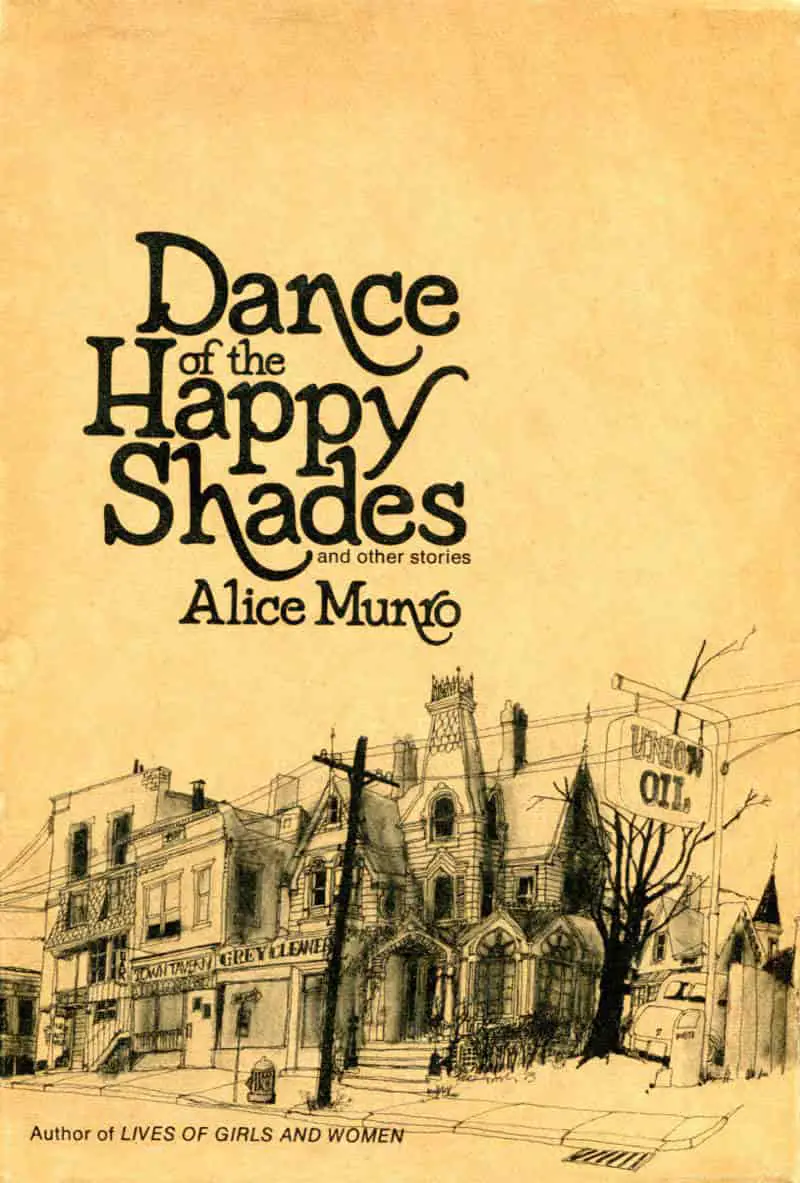
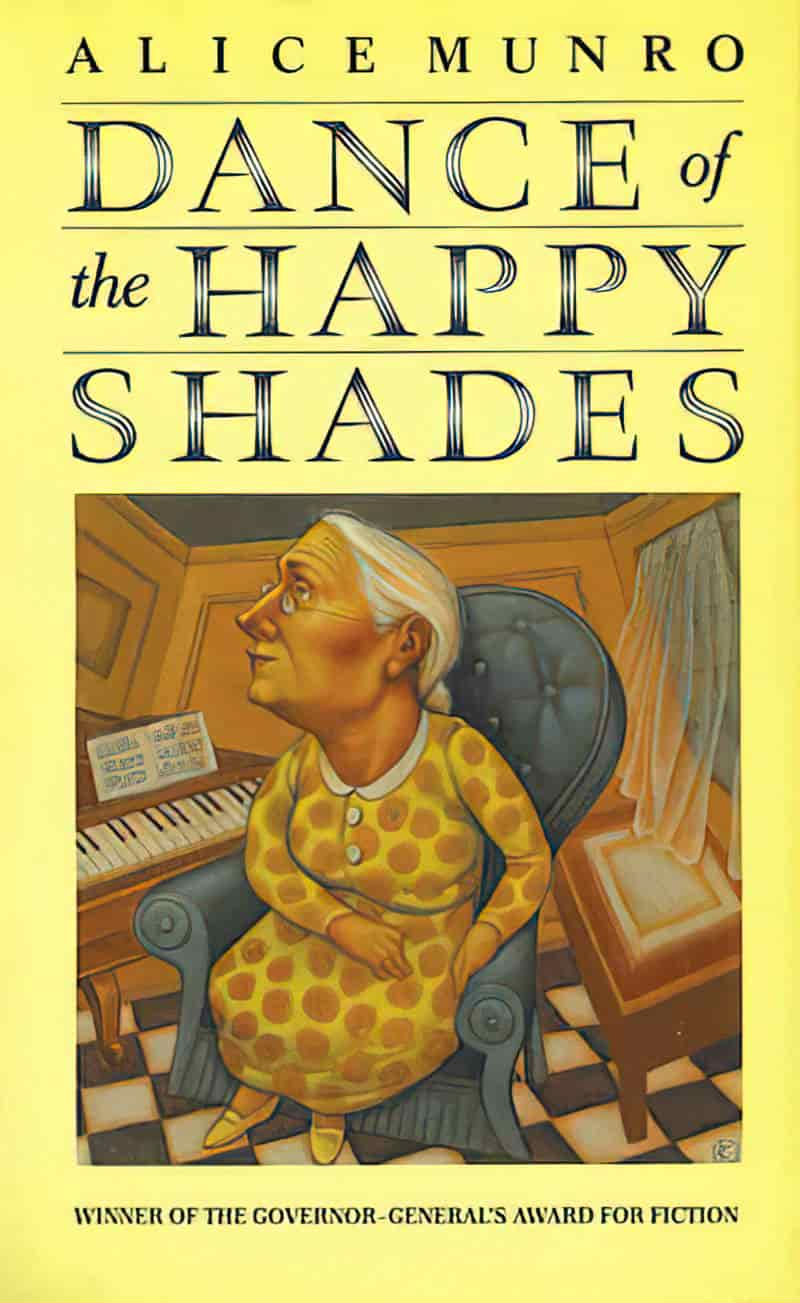
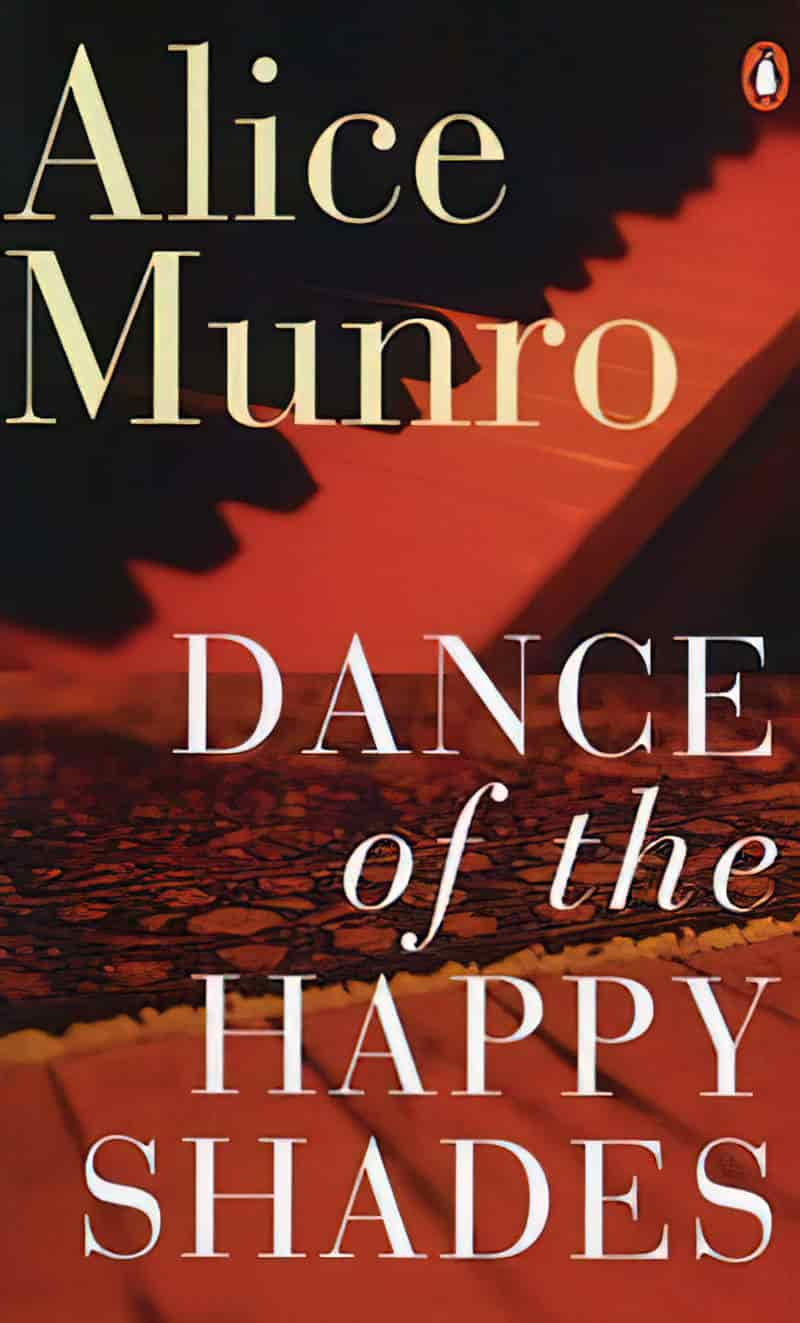
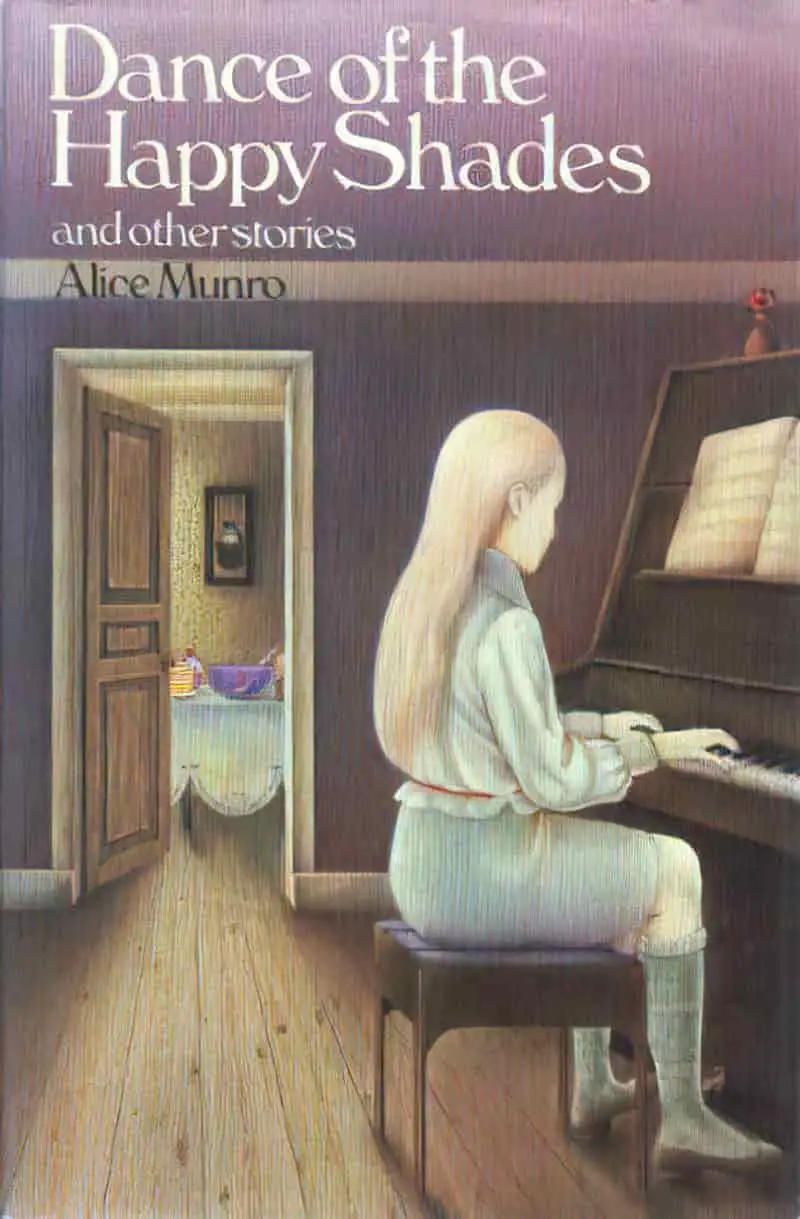
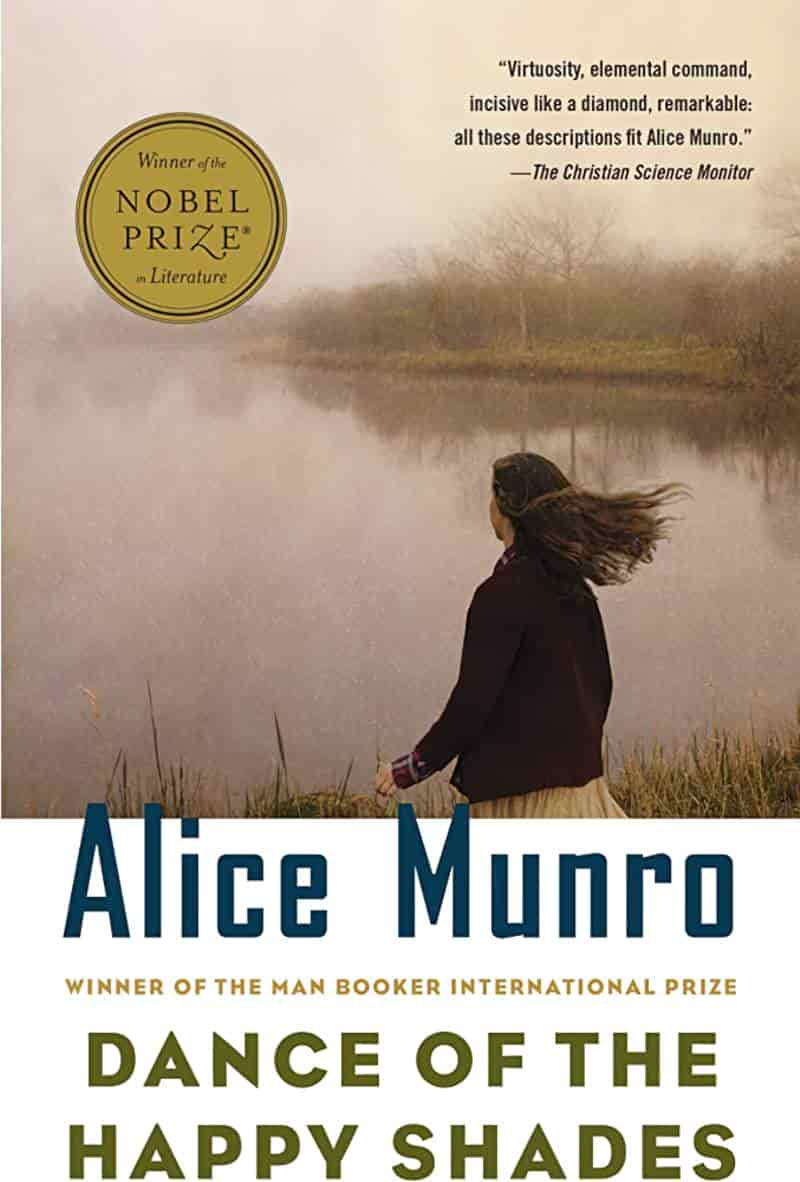
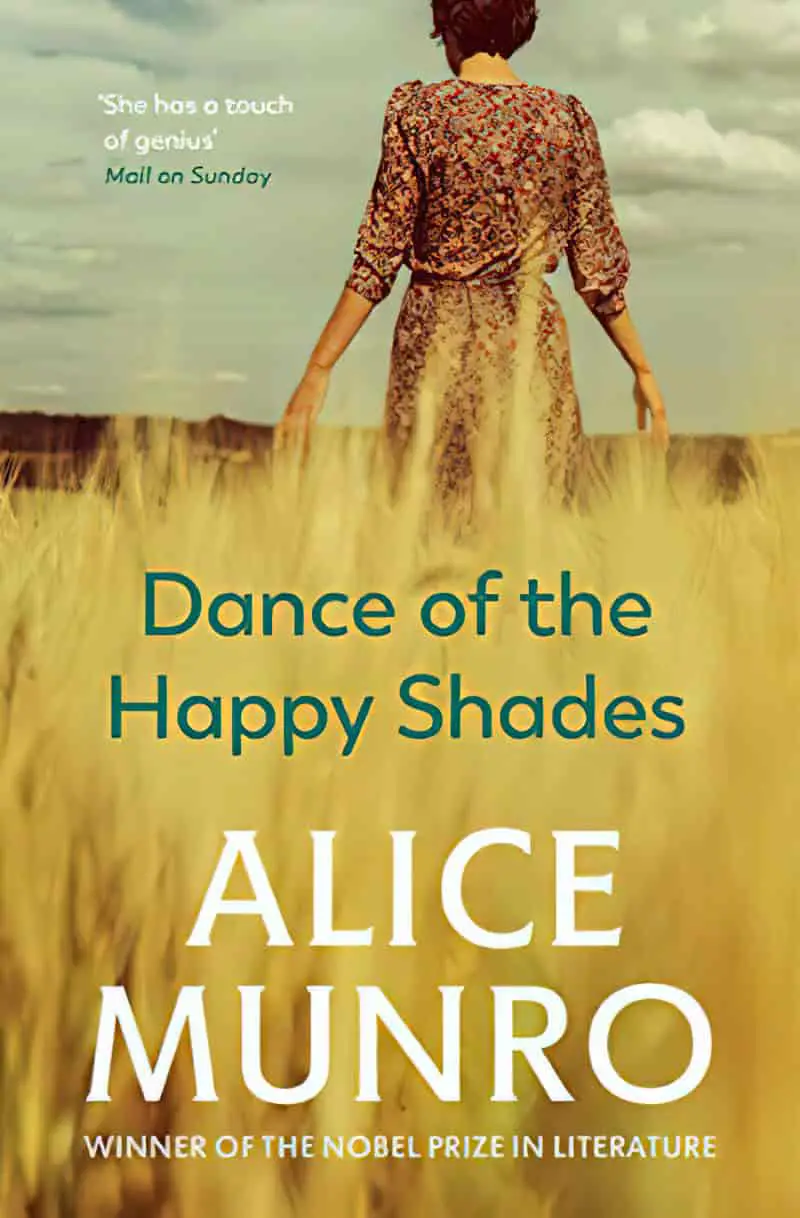
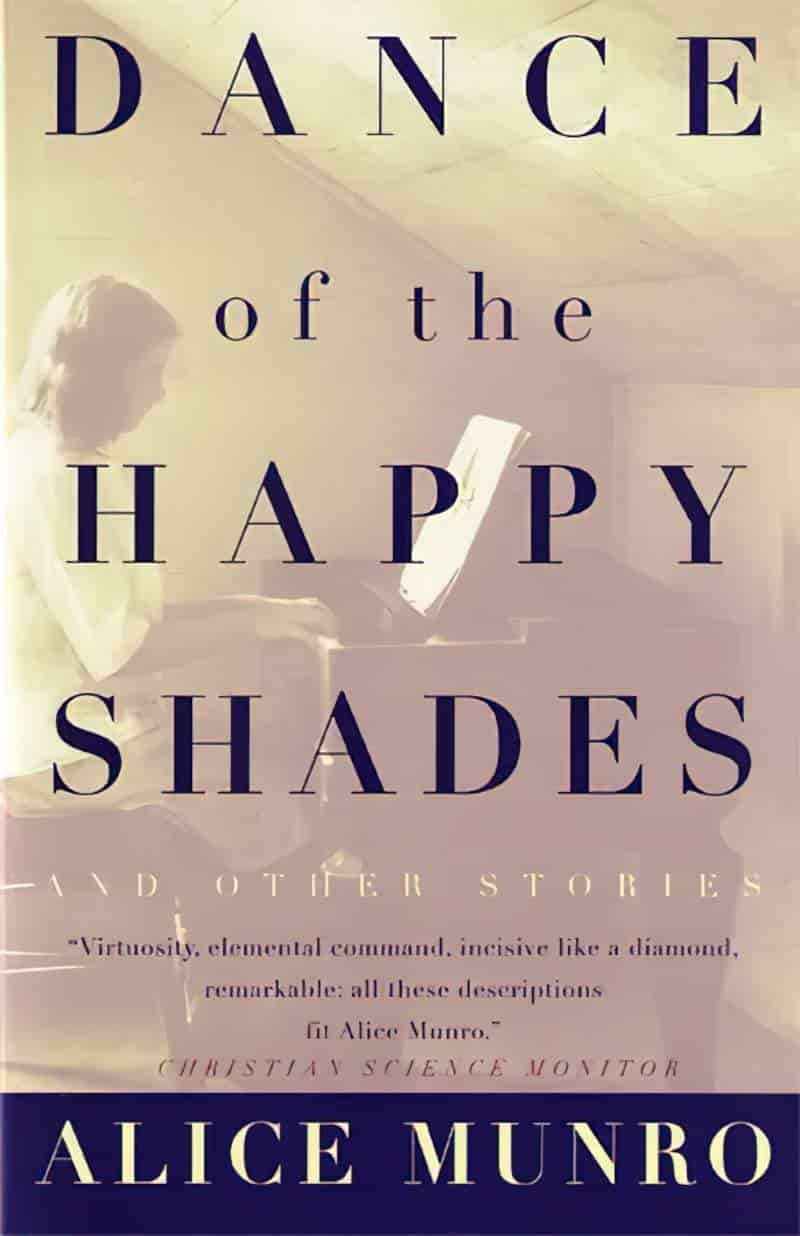
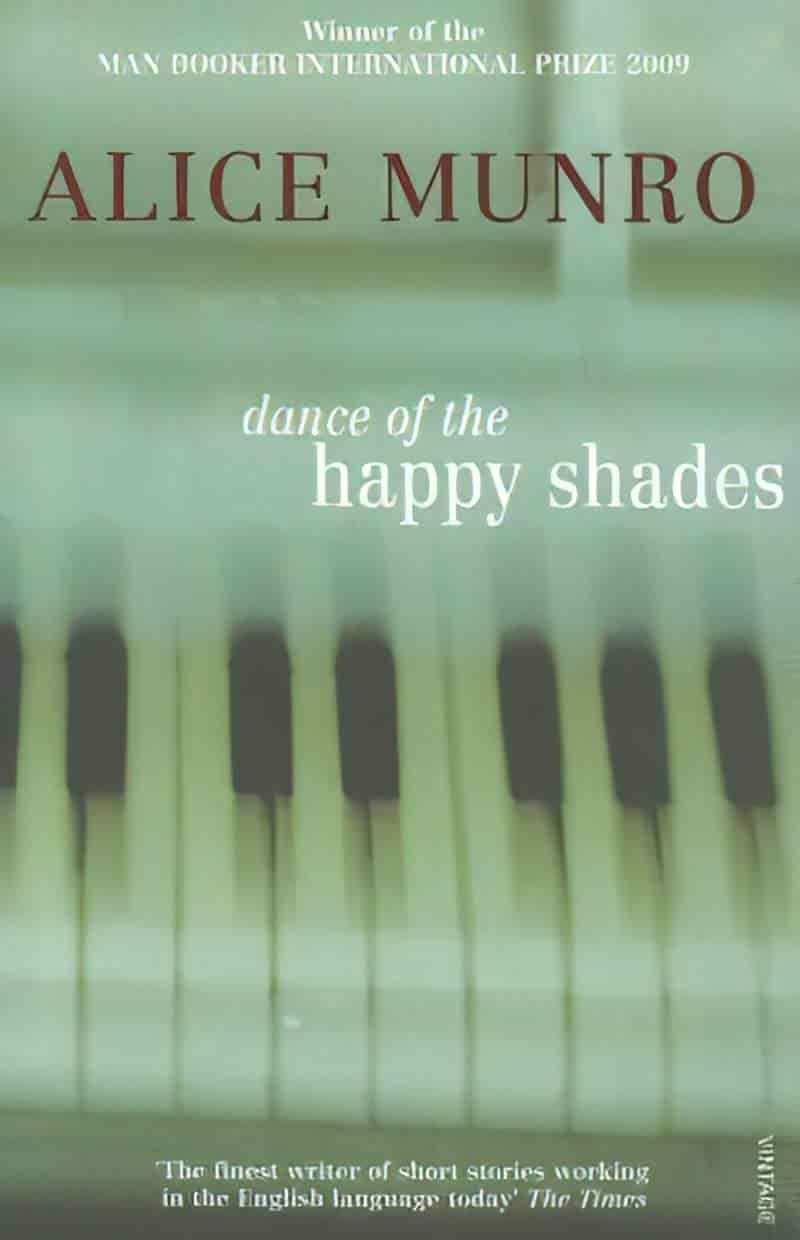
COMPARE AND CONTRAST
“Reunion” by John Cheever also features an adolescent who learns to see his father as a more complete human being. Unfortunately for the boy in Cheever’s story, the realisation does no one any favours.
